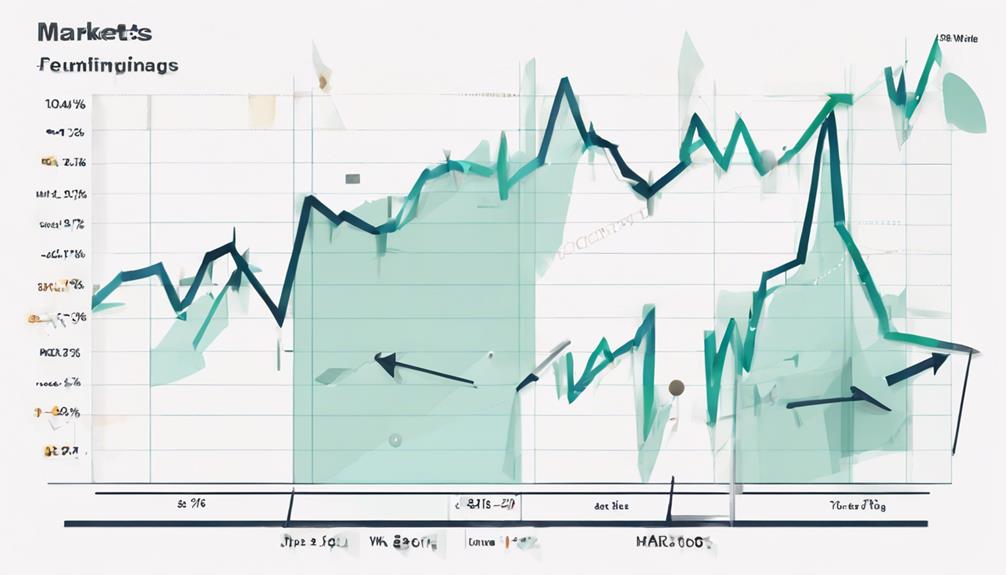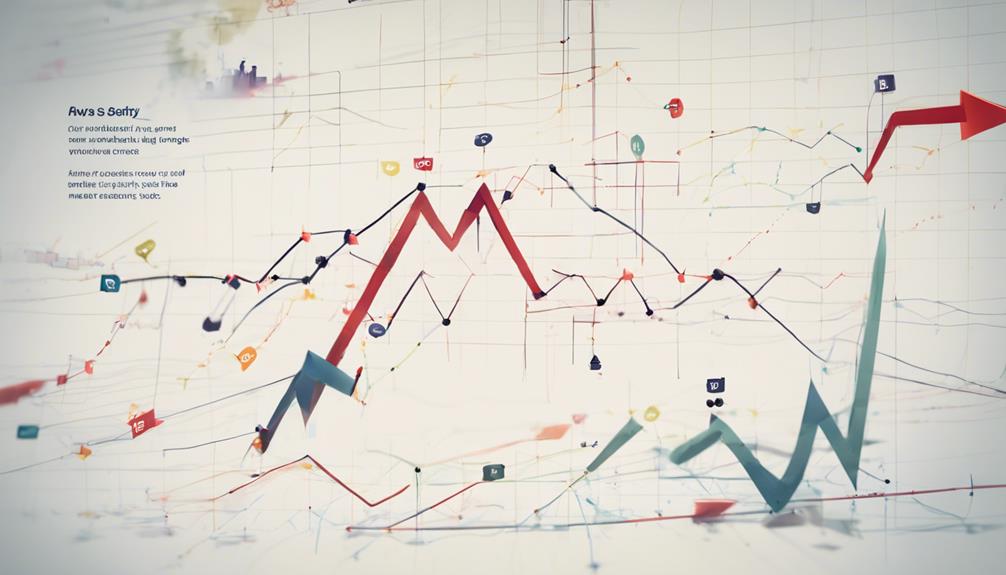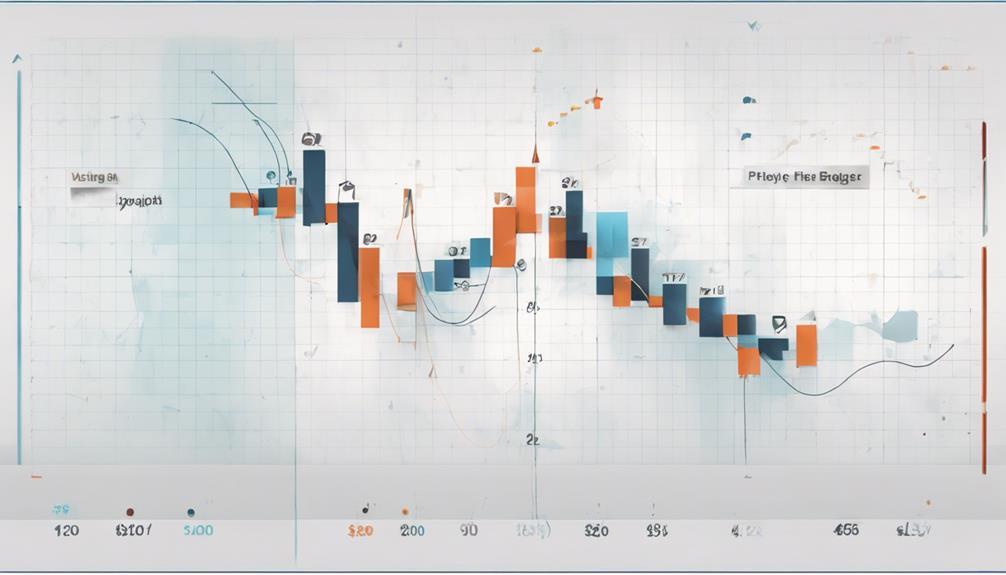Pivot points serve as fundamental tools in navigating the complexities of market trends, offering traders precise markers for strategic decision-making and risk assessment.
The ability to pinpoint potential turning points and gauge market sentiment through these calculated levels is paramount in formulating effective trading strategies.
By exploring how pivot points can influence market behavior and optimize trading outcomes, traders can gain a deeper understanding of their significance in today's dynamic financial landscape.
Significance of Pivot Points
Analyzing market trends, the significance of pivot points lies in their role as crucial support and resistance levels guiding traders in identifying potential price reversals and strategic entry/exit points.
As a fundamental technical analysis indicator, pivot points provide key price levels that help traders make informed decisions.
Support levels, where prices are more likely to stop falling and potentially reverse, and resistance levels, where prices may pause or turn lower, are essential components of pivot point trading strategies.
Identifying Market Trends

Pivot points are instrumental in guiding traders to identify and understand market trends by providing crucial support and resistance levels derived from the previous day's price movements. These key levels act as indicators for market sentiment, helping traders determine whether the trend is bullish (above the pivot) or bearish (below the pivot).
By analyzing price movements relative to these levels, traders can make informed decisions on entry and exit points, as well as setting stop-loss orders. Understanding market trends through pivot points allows traders to anticipate potential shifts in market direction and adjust their strategies accordingly.
This strategic approach to trading, based on key support and resistance levels provided by pivot points, enhances the ability to navigate volatile market conditions and capitalize on profitable opportunities. Therefore, incorporating pivot points into trading strategies is essential for traders seeking to make well-informed decisions and optimize their trading outcomes.
Decision-Making With Pivot Points

Utilizing pivot points in decision-making processes provides traders with a structured framework for identifying key levels of support and resistance within market trends. These pivotal levels serve as crucial reference points for traders to make informed decisions regarding entry and exit points in the market. By incorporating pivot points into their analysis, traders can strategically set stop-loss orders and profit targets, enhancing their risk management strategies.
Moreover, pivot points enable traders to interpret price action accurately, helping them gauge market sentiment and make well-informed trading decisions. This data-driven approach enhances the precision of decision-making processes within trading strategies, ultimately leading to more effective and successful trades. By leveraging pivot points effectively, traders can navigate market trends with greater confidence and optimize their trading performance. The ability to utilize pivot points for decision-making empowers traders to react swiftly to changing market conditions and capitalize on opportunities as they arise.
Risk Management Strategies

Effective risk management in trading requires strategic utilization of pivot points to set stop-loss orders at key support or resistance levels, limiting potential losses and optimizing position sizes based on market dynamics.
Traders employ pivot points to determine the most suitable position size by considering the distance to the next support or resistance level. This approach aids in defining risk-reward ratios for trades, enabling traders to identify profit targets and establish appropriate stop-loss levels.
By incorporating pivot points into risk management strategies, traders can adapt their trading approaches in response to evolving market conditions and price action. Furthermore, leveraging pivot points allows traders to account for market volatility, trade duration, and overall portfolio risk tolerance, contributing to more informed decision-making and enhanced risk mitigation.
Implementing risk management strategies with pivot points is essential for navigating the uncertainties of the market and safeguarding trading capital effectively.
Maximizing Profitability

To enhance financial outcomes and optimize trading performance, strategic analysis of pivot points in market trends is paramount for maximizing profitability. When using Pivot Points for trading, identifying support and resistance areas becomes easier, aiding in setting precise entry and exit points. This methodology enables traders to strategically place stop-loss orders and profit targets, enhancing profitability.
Analyzing market trends with pivot points helps in capitalizing on potential price reversals and trend continuations, leading to informed decision-making. Moreover, pivot points play a crucial role in optimizing trading strategies and risk management practices, ultimately improving profitability in various financial markets.
Understanding how to interpret and apply pivot points accurately can significantly increase trading success and better utilization of market trends to maximize profits.
Why is understanding pivot points important for analyzing market trends?
Understanding pivot points analysis in technical indicators is crucial for analyzing market trends because it helps identify potential turning points in price movements. By knowing where these pivot points are, traders can make informed decisions about when to enter or exit a trade, leading to better profitability and risk management in the market.
Frequently Asked Questions
Why Are Pivot Points Important in Trading?
Pivot points are vital in trading due to their ability to identify key support and resistance levels, assisting in strategic decision-making for entry, exit, and profit-taking. They serve as reference points for gauging market sentiment and potential price reversals.
What Is the Purpose of the Pivot Point?
The pivot point acts as a dynamic reference level for traders, facilitating price movement assessment based on the previous day's data. It serves as a crucial support/resistance marker, aiding in trend identification, trade planning, and risk management with precision.
What Is the Significance of a Pivot?
A pivot point holds significance in technical analysis by serving as a pivotal price level that traders use to determine potential support or resistance. It aids in decision-making by indicating market sentiment and facilitating strategic entry and exit points.
What Is the Most Important Pivot Point?
The central pivot point (PP) holds prominence as the primary pivot point in market analysis. Calculated from the previous day's high, low, and close prices, PP serves as a crucial reference level for determining market sentiment and trend direction.
Conclusion
In conclusion, pivot points serve as the compass guiding traders through the turbulent seas of market trends, helping them navigate with precision and clarity.
Like beacons of light in a stormy night, pivot points provide traders with crucial support and resistance levels, enabling them to make informed decisions, manage risks effectively, and maximize profitability in their trading endeavors.
Embracing the power of pivot points can truly elevate one's trading strategy to new heights.
